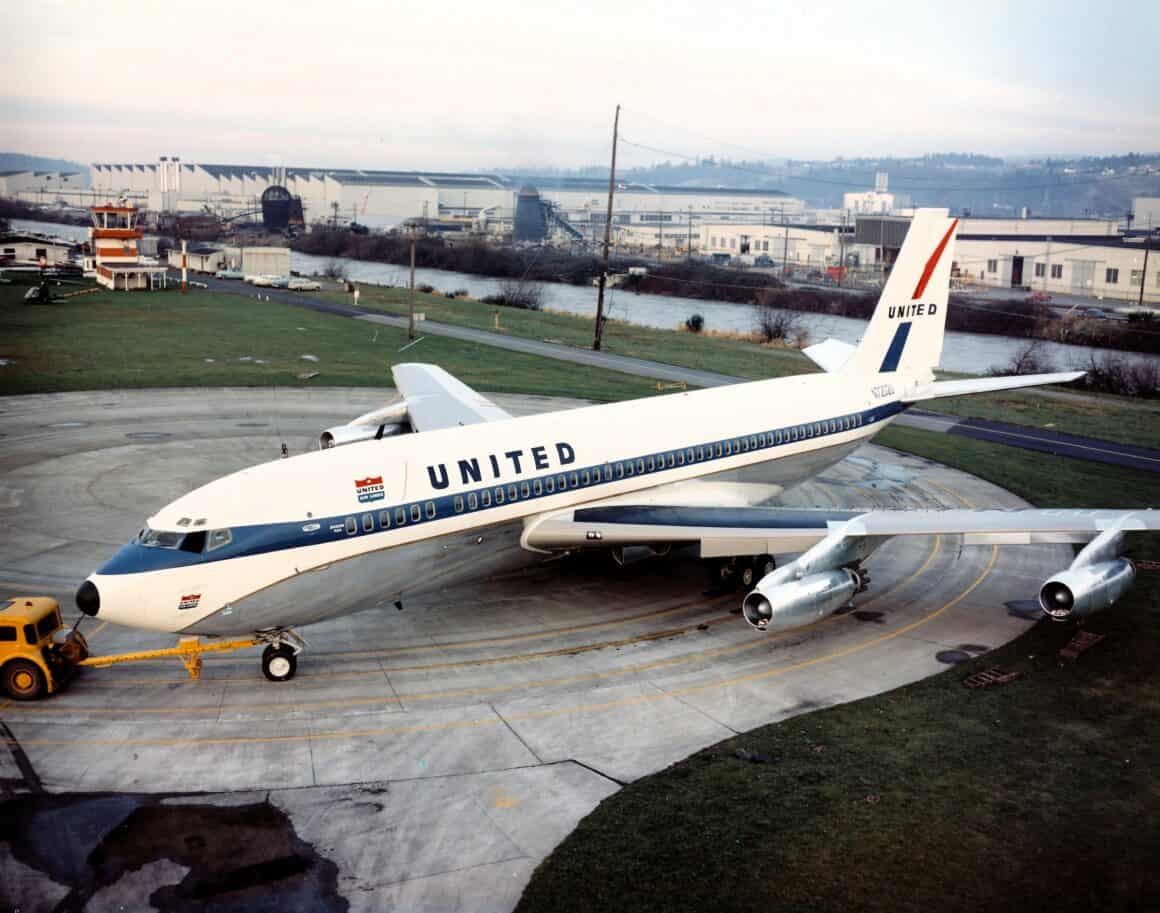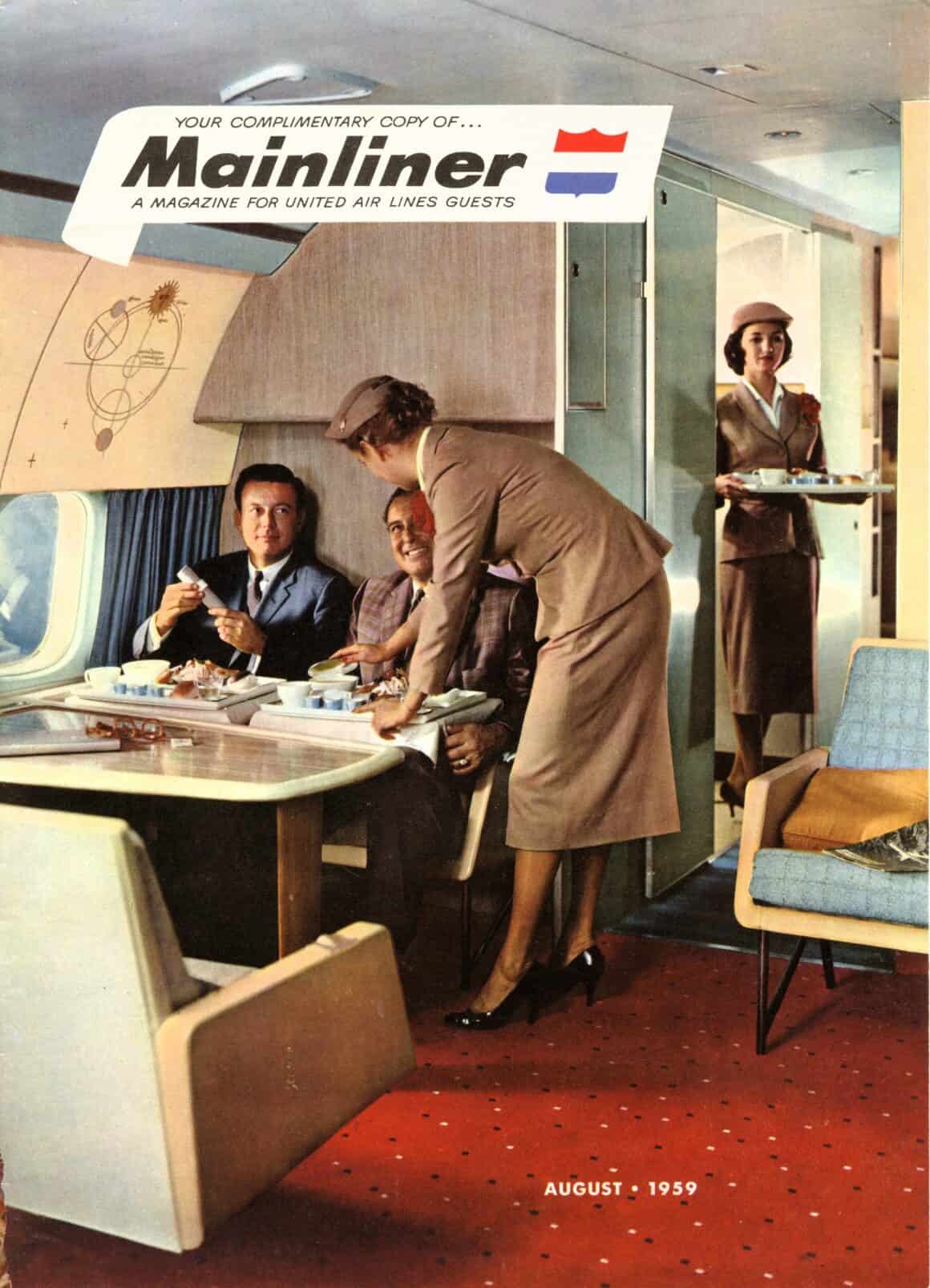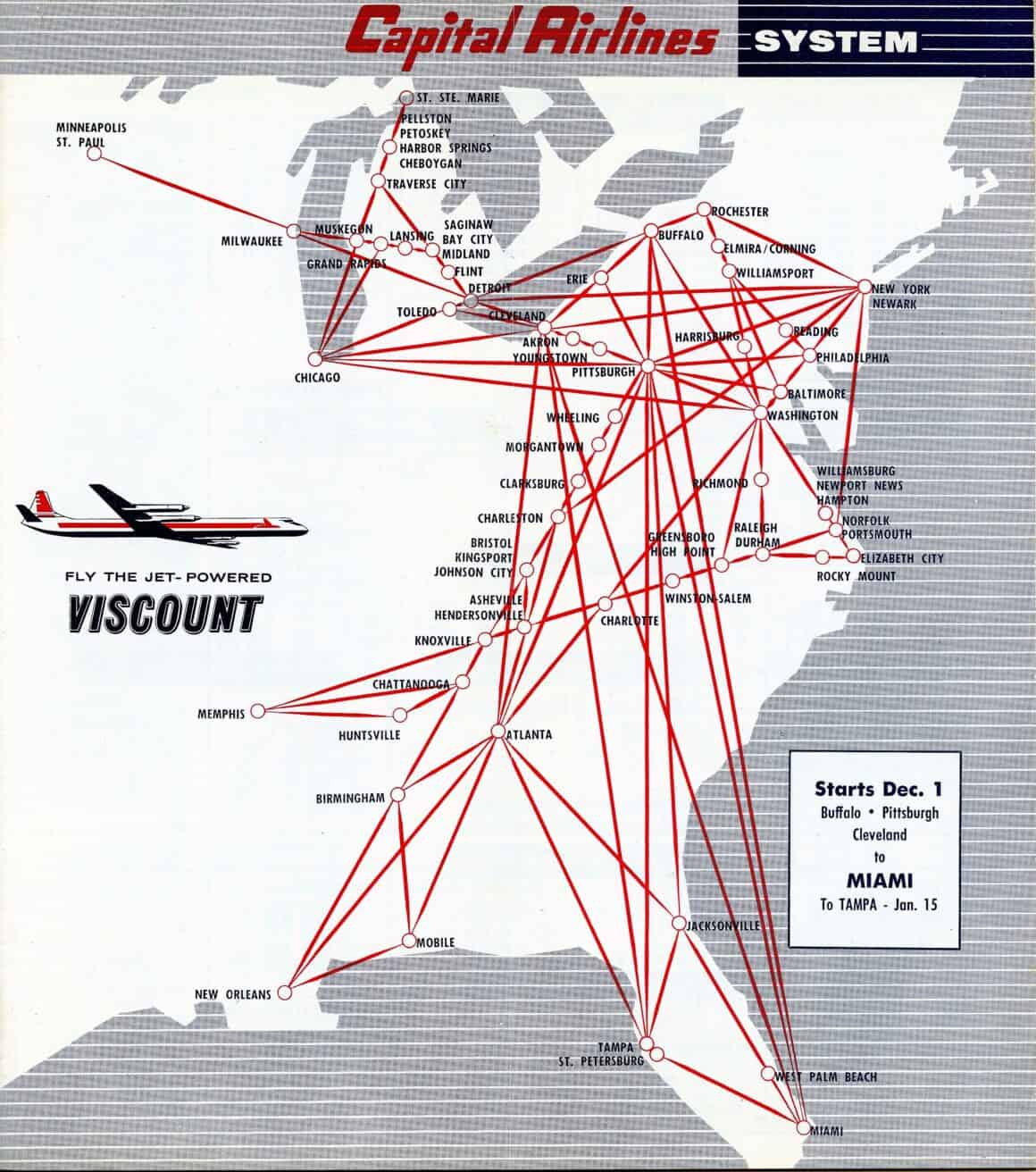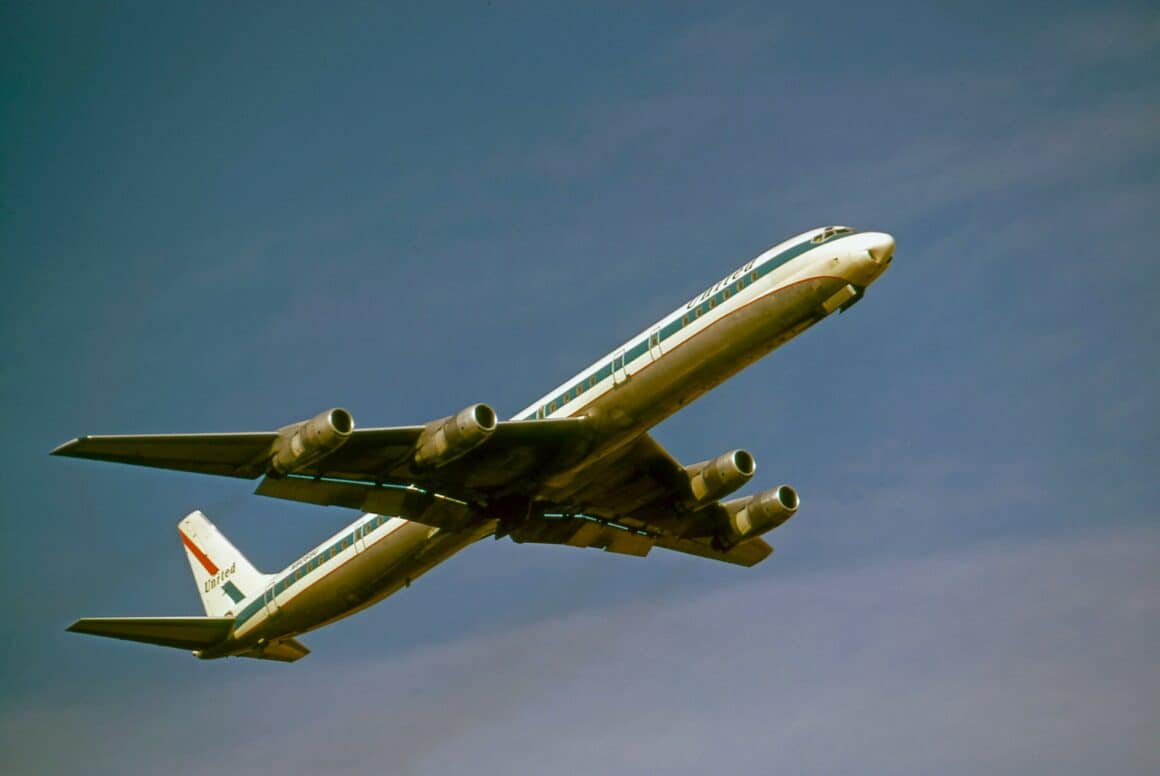United Air Lines officially entered the jet age on 18 September 1959, when Flight 800—a Douglas DC-8—departed San Francisco for New York at 0830 local time.
It would have been the first scheduled DC-8 flight in the world had Delta Air Lines not inaugurated its own DC-8 service from New York to Atlanta that same morning. Due to the three-hour time zone difference between the West Coast and the East, Delta’s flight operated first.

United would be able to claim an aircraft inaugural the following year, though, when the company launched the world’s first Boeing 720 service on 5 July 1960. United’s fleet would eventually include 29 of these medium-range jetliners.

Adjusting Cabin Service
With jet service came the problems associated with adjusting to shorter flight times and higher passenger counts. United’s Mainliner magazine of August 1959 warned that “on many flights which presently include full-course meal service, the DC-8 will simply not permit such service. For example, between New York and Chicago (flight time an hour and a half), it will be impossible to offer complete meal service to as many as 119 passengers.” The article went on to state that “a popular innovation… will be the new soup and salad tray. Cream soups… will be served on an attractive tray together with a colorful salad.”

Famous industrial designer Raymond Loewy was called upon to help simplify things. For in-flight service, his company created a “condiment tray which holds salt, pepper, sugar, cream, whipped butter, salad dressing, beverage cup and silverware. Heavy one-piece silver in the Scandinavian manner and table linens of rose-beige and mocha complement the DC-8 color scheme.”
A French Bird Joins the Fleet
The airline scored another inaugural the following year when it became the first US carrier to put a foreign-built turbojet into service. United’s Sud Aviation SE-210 Caravelle twin-jets operated their first flights for the company on 14 June 1961. Designed for short to medium-length routes, the Caravelles would serve until 1970.

The introduction of Caravelles followed close on another milestone for the company. On 1 June 1961, United—then the nation’s second largest domestic airline in number of passengers carried—absorbed Capital Airlines, the fifth largest, through merger, transforming United into the nation’s largest domestic airline ahead of chief rival, American.

The acquisition of Capital Airlines gave United a north-south network in the eastern part of the country to complement its primary east-west transcontinental system and its north-south routes along the Pacific coast. Along with the new mileage came Capital’s workforce of 7,000 employees and most of its fleet, including 41 of that company’s famed turboprop Vickers Viscounts (an additional six were purchased later).
Experimenting with Class
In 1963, United introduced One-Class service aboard Boeing 720s, a single cabin of five-abreast (2 + 3) seating instead of six-across, with fares set lower than First Class but higher than Coach. The One-Class experiment did not last long as UAL lost First Class customers to its rivals. The five-abreast, one-class service would evolve into Standard Class, which became the norm for local service carriers when they introduced jet service.

United’s One-Class experiment was followed by another short-lived product called Red, White & Blue, in which three classes of service—First (2 + 2 seating), Standard (2 + 3), and Coach (3 + 3)—were all offered aboard the same aircraft.

727s and Stretch DC-8s
United’s revenue passenger count increased year-over-year during the 1960s, while more new aircraft types were added to the fleet. Boeing’s tri-jet 727 first flew for United Air Lines in February 1964, and the stretched version of the DC-8—Douglas’s DC-8-61—was introduced in February 1967.

First in the US with the 737
United was the first airline in the United States to operate Boeing’s twin-jet 737 in 1968, and as more 737s entered UAL’s fleet, United’s remaining propeller-equipped types—DC-6s and DC-6Bs and Vickers —were withdrawn from service. United flew its last prop type—a DC-6 service—in February 1970.

Welcome the Wide-Bodies
United placed its first Boeing 747—the airplane that would begin to change airline economics—into service on 23 July 1970. This was followed a year later by introduction of the wide-body Douglas DC-10 into the company’s schedules.

Suddenly, the airline had a lot more seats to fill. Helping in UAL’s quest to do so was the company’s new Apollo computerized central reservations system, activated in the spring of 1971. The booking system would be offered to travel agents later in the decade.
READ MORE ABOUT UNITED AIRLINES ON AVGEEKERY
- United’s Men-Only Flights: The Exclusive Club in the Sky Your Wife Couldn’t Join
- The Mystery at 36,000 Feet: What Hit United Flight 1093?
- United Airlines to Lead $500M Washington DC Airport Expansion
- Back When United’s 767-200 Was State Of The Art
- United Airlines Tulip Logo, Gone But Not Forgotten
- Groovy! Go behind the scenes of United Airlines Pilot Training in the 1960s
With introduction of the 747s, United Air Lines began referring to its aircraft as ‘Friend Ships’, following on from the slogan “Fly the Friendly Skies”, which had been introduced in 1966. A slight revision of the fleet’s basic livery in 1972 added the words ‘Friend Ship’ to aircraft fuselages along with four stars, which represented United’s four predecessor carriers: Boeing Air Transport, National Air Transport, Pacific Air Transport, and Varney Air Lines.

Extreme Makeover
A complete makeover of the company’s image was revealed on 17 June 1974, when a DC-8 painted in a fresh new livery featuring a new logo was flown from San Francisco to Chicago (O’Hare), where it was unveiled to members of the press, civic leaders, and other guests. The new look included merging Air Lines into one word: United Airlines.

Deregulation
In 1977, with the prospect of deregulation and abolition of the Civil Aeronautics Board looming on the horizon, United viewed the proposed legislation as penalizing large carriers, and United was the nation’s largest. Management believed that deregulation would benefit the smaller trunk carriers, the local service airlines, and even commuter carriers more than it would the major trunks.

But United survived deregulation in 1978 and became one of the few US air carriers to navigate the subsequent decades successfully, reaching the position that it holds today: the world’s fourth-largest airline in terms of revenue passengers carried and first in available seat miles.
